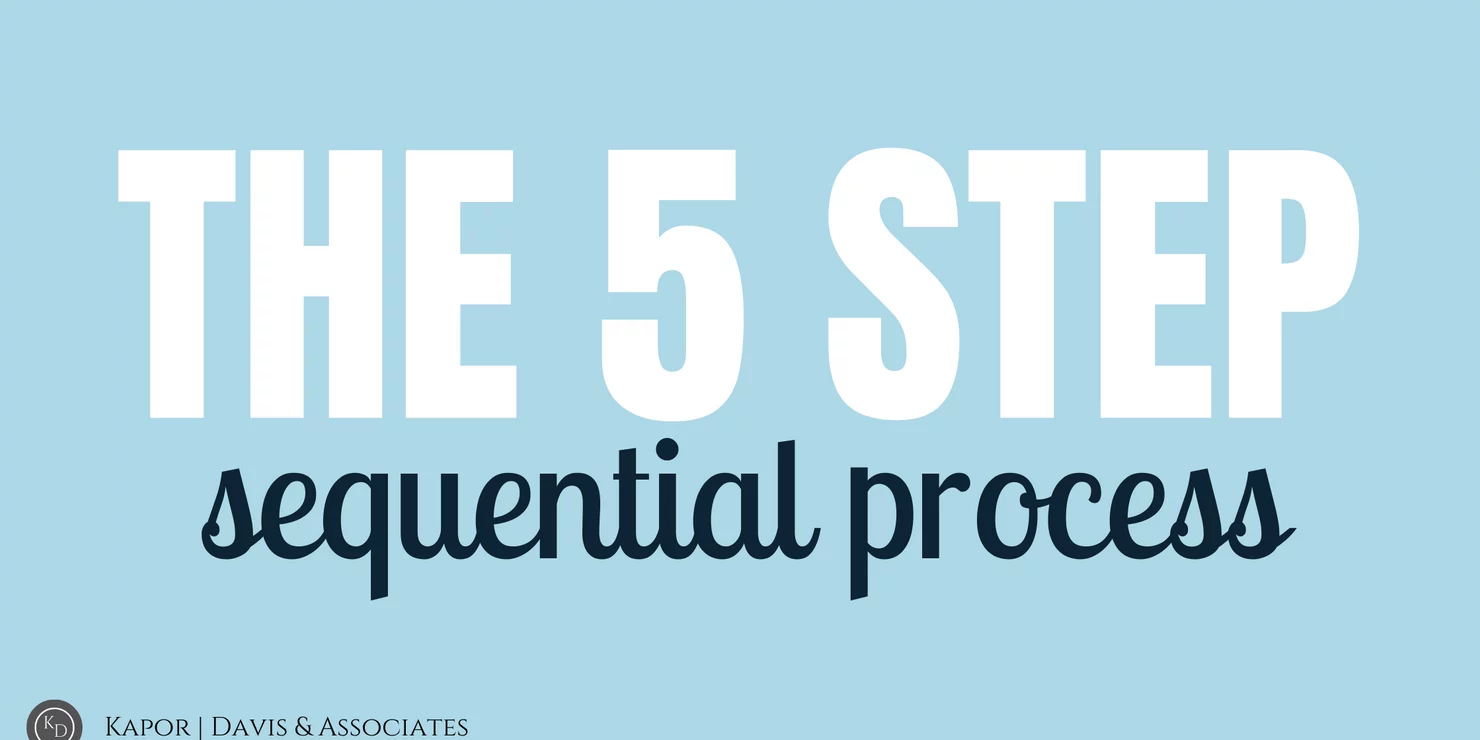How Your Disability Claim Is Evaluated
June 27, 2022

One of our clients’ most frequently asked questions is, “how exactly is my case evaluated?” The Social Security Administration has a 5-Step process to determine disability called the 5-Step Sequential Evaluation. This evaluation demonstrates a standard and ensures accuracy and consistency across determinations. Here we break down the 5 step evaluation and what questions are assessed at each step in the process.
The 5 Steps Are:
- Is the applicant working at a level of “substantial gainful activity?”
- Does the applicant have a severe, medically determinable impairment?
- Does the impairment meet or equal a listing?
- Does the impairment allow for past relevant work?
- Can the applicant do any other work?
Step 1: Substantial Gainful Activity:
This first step is to evaluate whether or not you are currently working at a competitive level or “engaging in substantial gainful activity.” Are they doing something that involves significant physical or mental activities and is it the type of activity normally done for pay or profit? What evaluators are looking for is if, despite your disabilities, you are working and making a certain amount each month. If you are performing work that is considered to be SGA, you will be denied for disability. You can read more about what is considered “substantial gainful activity” here.
Step 2: Severe, Medically Determinable Impairment:
In this step, Social Security and Disability Determination Services (DDS) will determine whether a person has a severe impairment or combination of impairments, and whether they are medically determinable, which mean it was diagnosed by a doctor and documented in medical records.
A severe impairment is defined as one that significantly limits a person’s ability to perform basic work activities such as:
- Pushing and pulling
- Lifting and carrying
- Sitting and standing
- Concentrate and remember
- Interact with others
- Maintain persistence and pace
This is also the step where DDS will determine durational requirements. In order to be a severe impairment, it is one that has lasted or is expected to last for 12+ months, or is expected to result in death. If a condition is not expected to last at least a year, it does not meet the standard for disability.
Step 3: Listings:
At this step, Social Security Administration will determine if the applicant meets a “listing.” There are 14 categories of listings that provide specific criteria for certain conditions, that if met, will automatically define the claimant as disabled. If met, the evaluation for disability ends here. If not, you continue to the next step. See here to explore all of the listings.
Step 4: Past Relevant Work:
Past relevant work (PRW) is any substantial gainful activity engaged in during the last 15 years. You must be able to prove that your disabilities prevent you from performing any of that work. All of the claimant’s PRW will be classified by exertional and non-exertional requirements, categorizing whether the work is or is not strength related, which can include the ability to lift, sit, stand, walk, hold, push, and pull. This is evaluated in a Residual Functional Capacity Assessment conducted by Disability Determination Services (DDS). If you are unable to perform your past relevant work, the evaluation moves onto step 5.
Step 5: Other Work:
At this step, DDS asks, “Are there a significant number of jobs in the national economy that the claimant can do on a sustained and regular basis?” Let’s break this question down.
- “National Economy” – Includes every job that exists in the country, even if they are unavailable because the positions are filled.
- “Sustained” – Able to perform the job for more than a few months.
- “Regular” – Able to work the job at the full-time level.
Should DDS or the judge find that you cannot perform any jobs within the national economy, you will be found disabled at this step.
There are many rules and nuances at each of step of this process. We suggest reaching out to our attorneys at Kapor Davis & Associates to help guide you through the process. We will work to thoroughly understand your claim, and create the best argument for disability possible.

